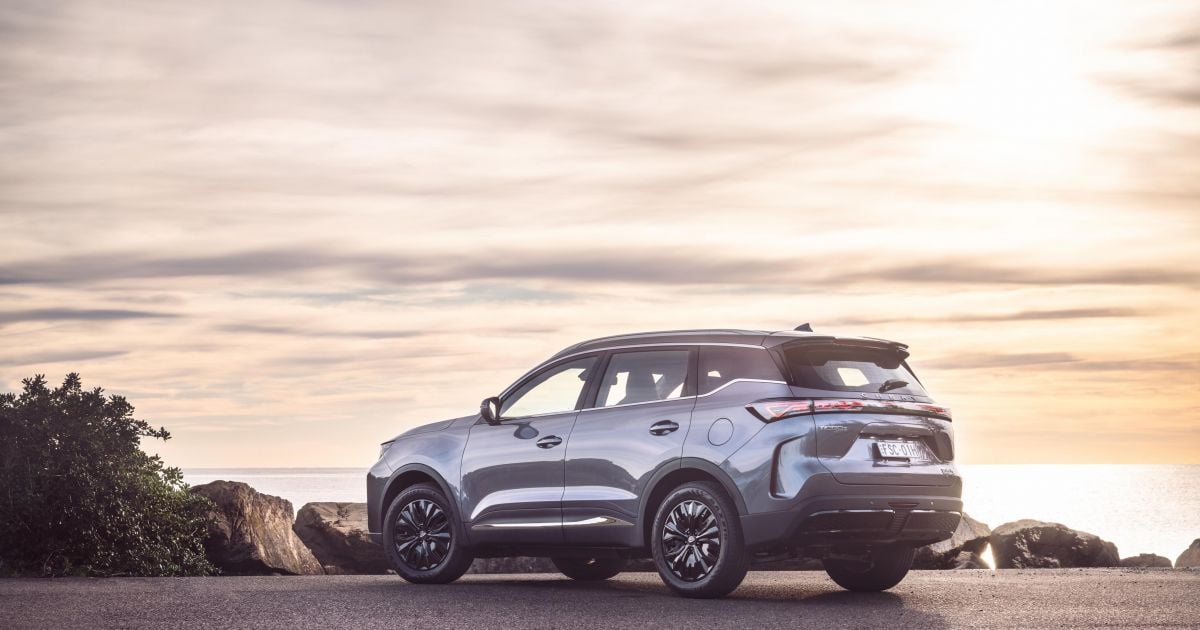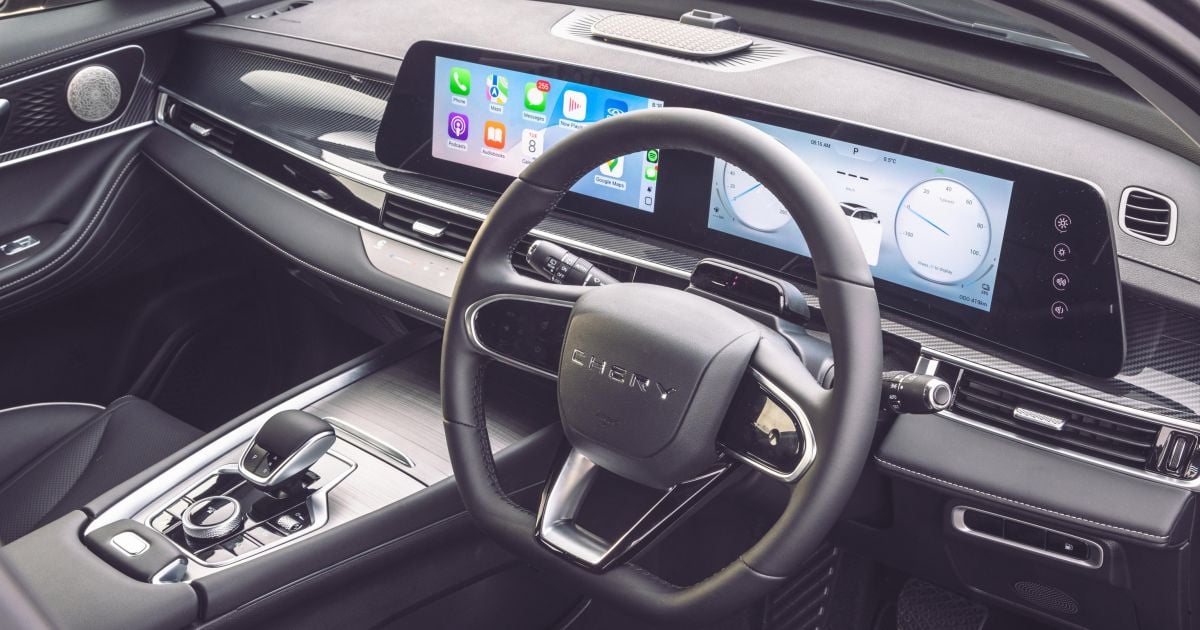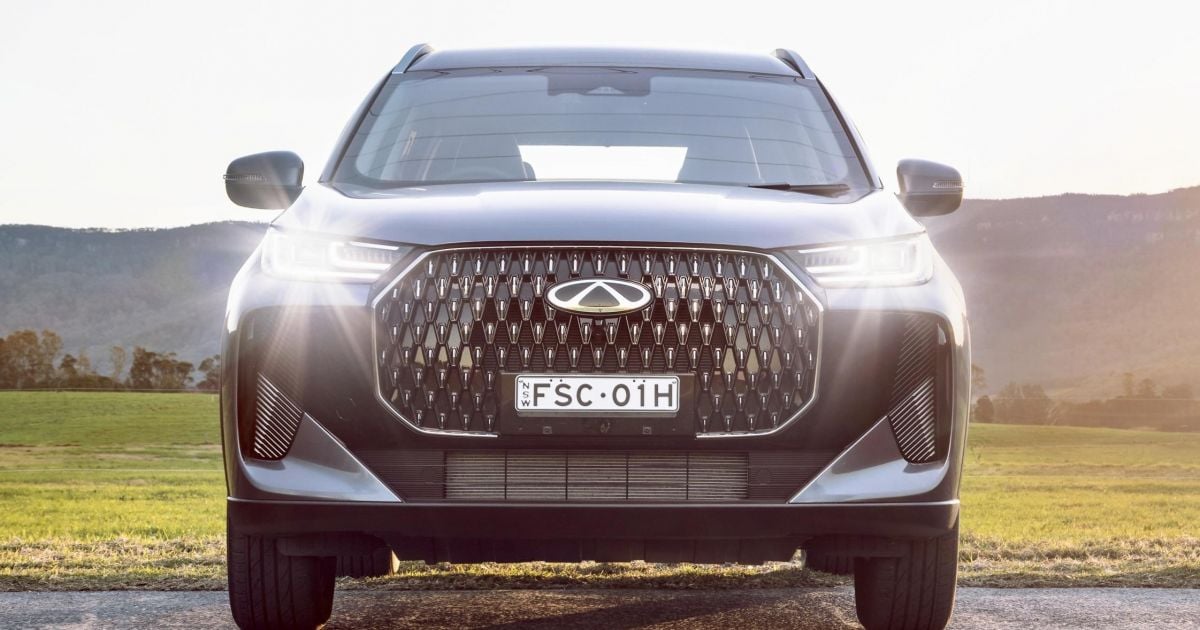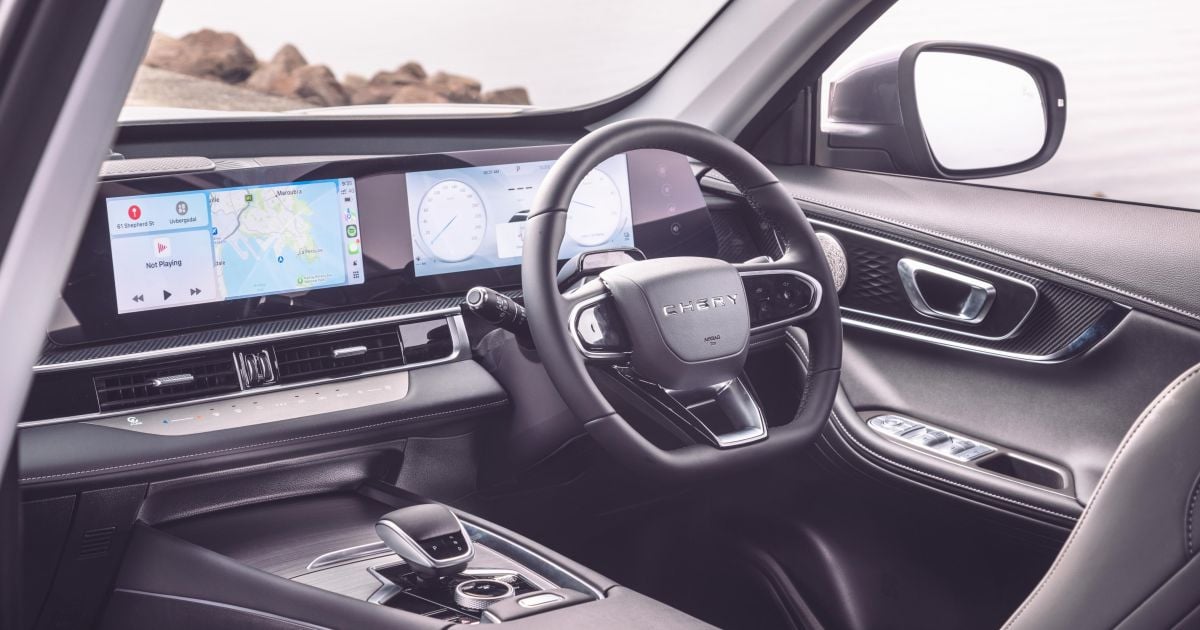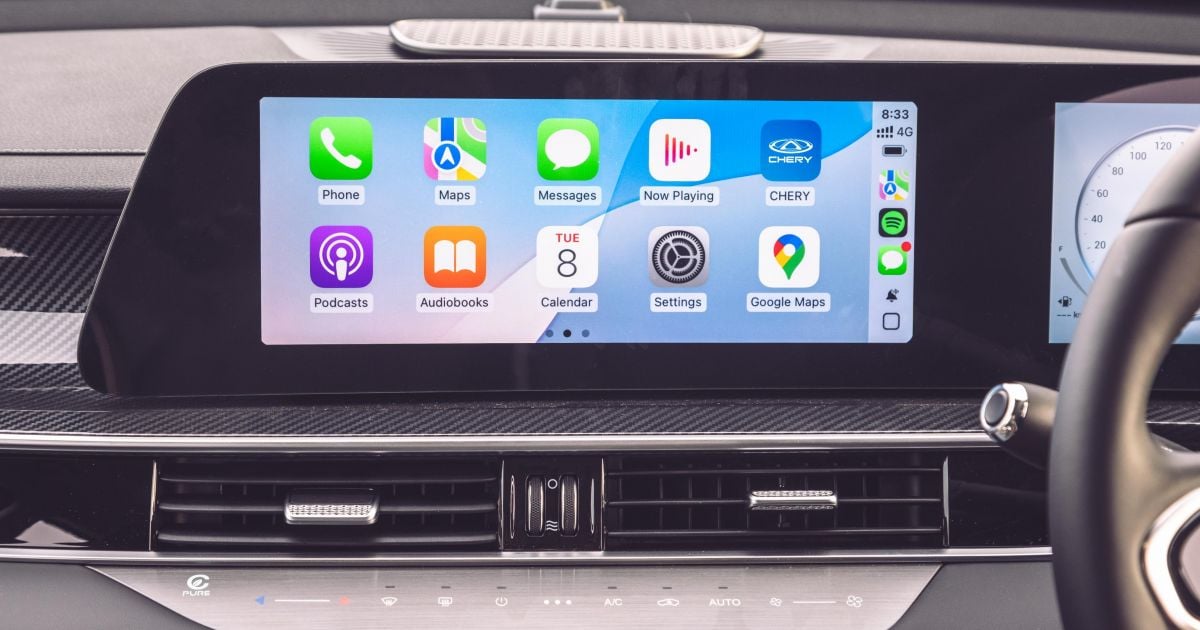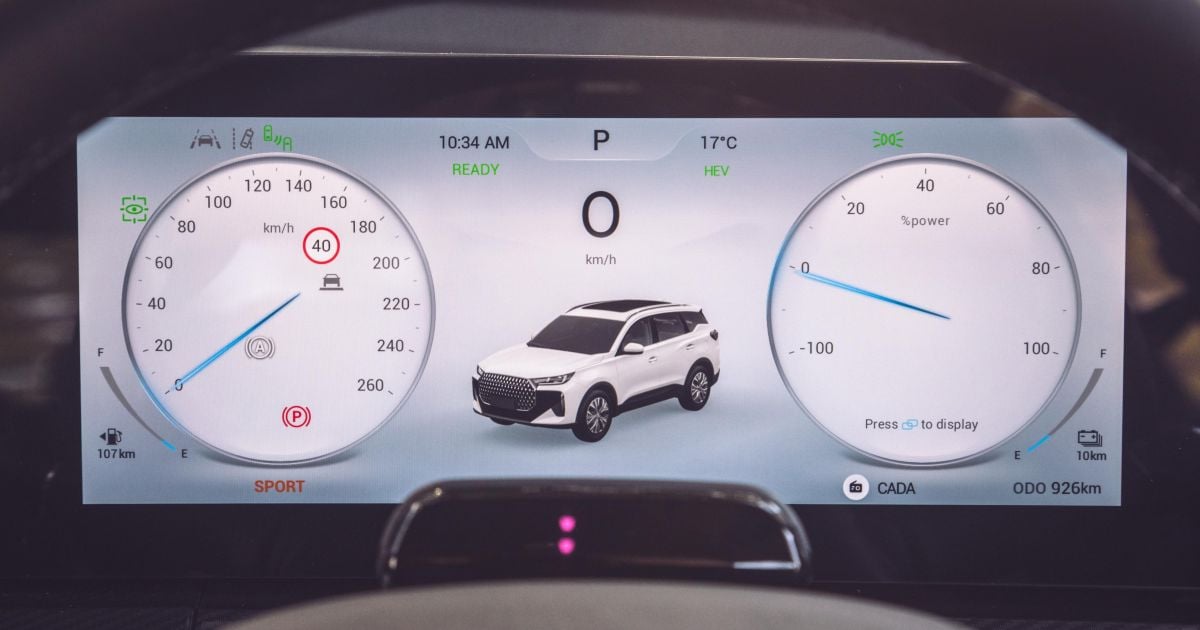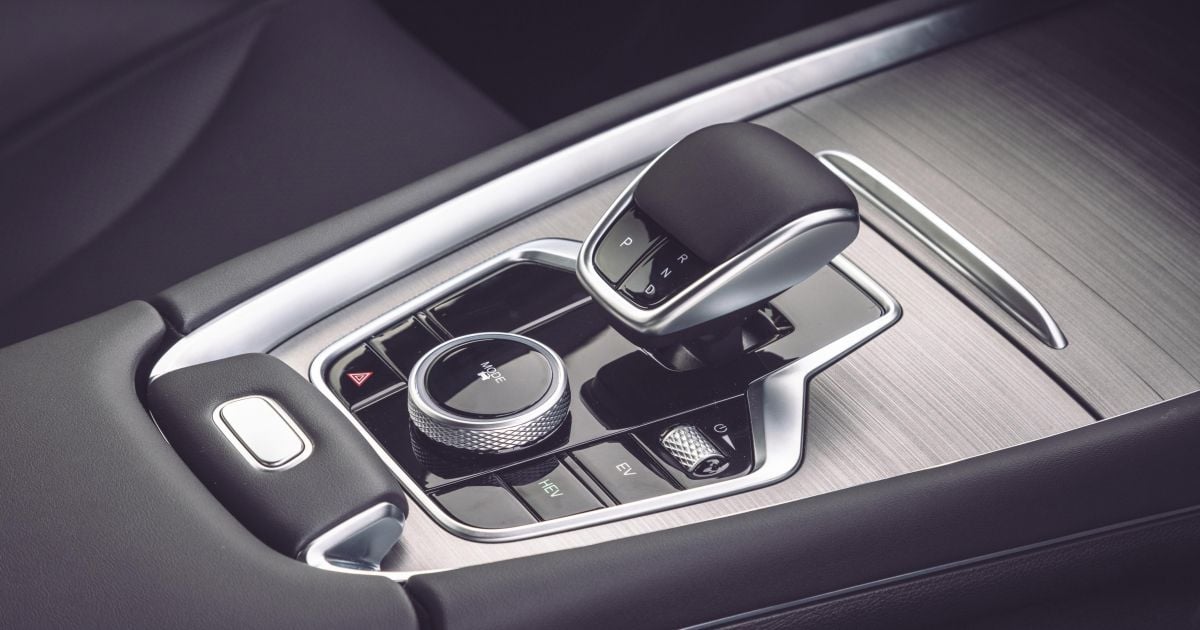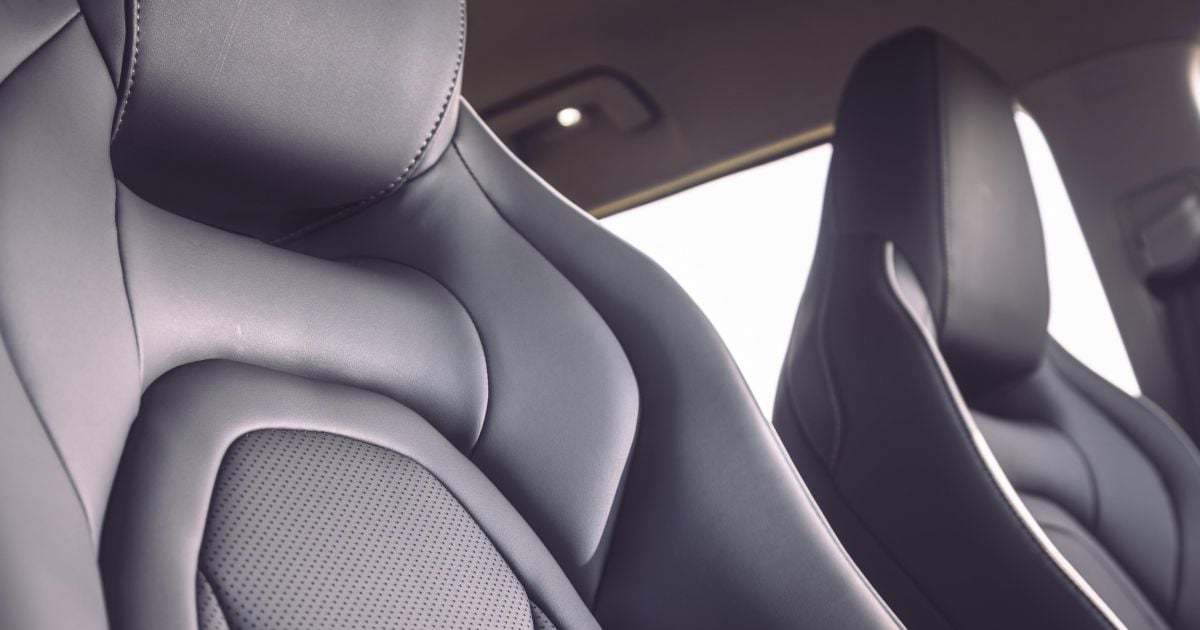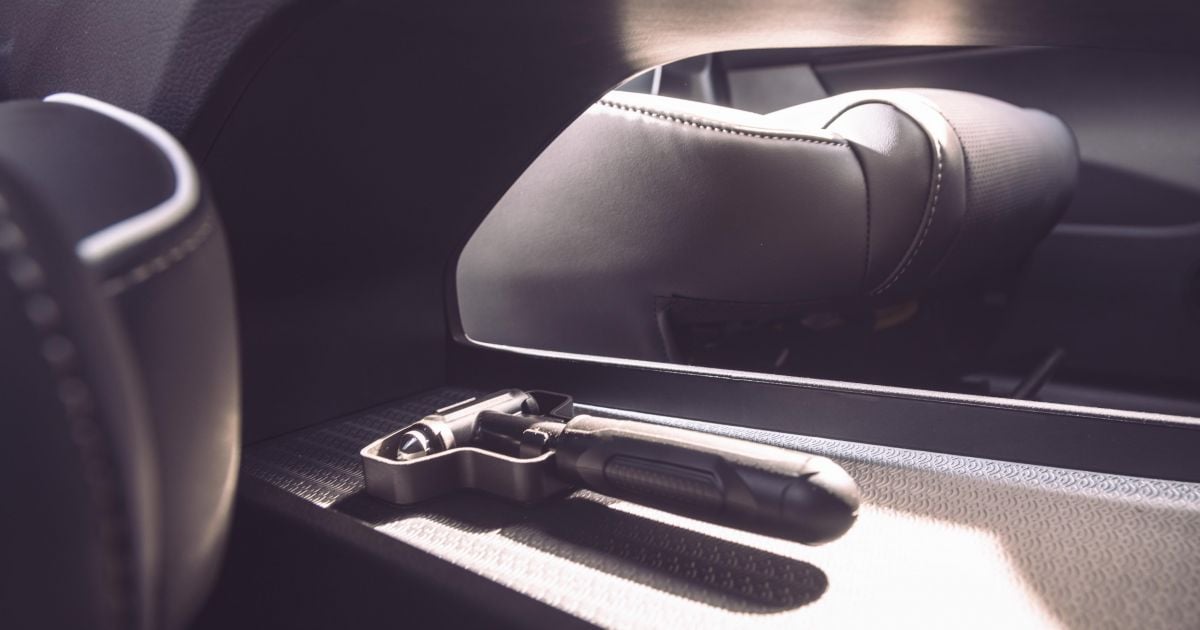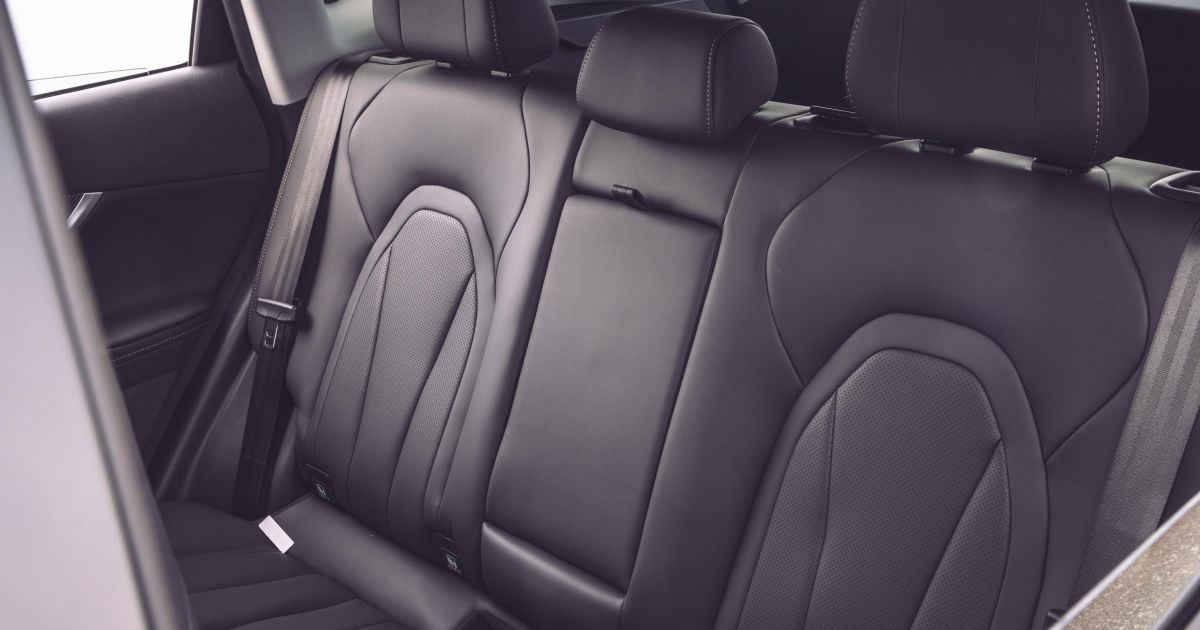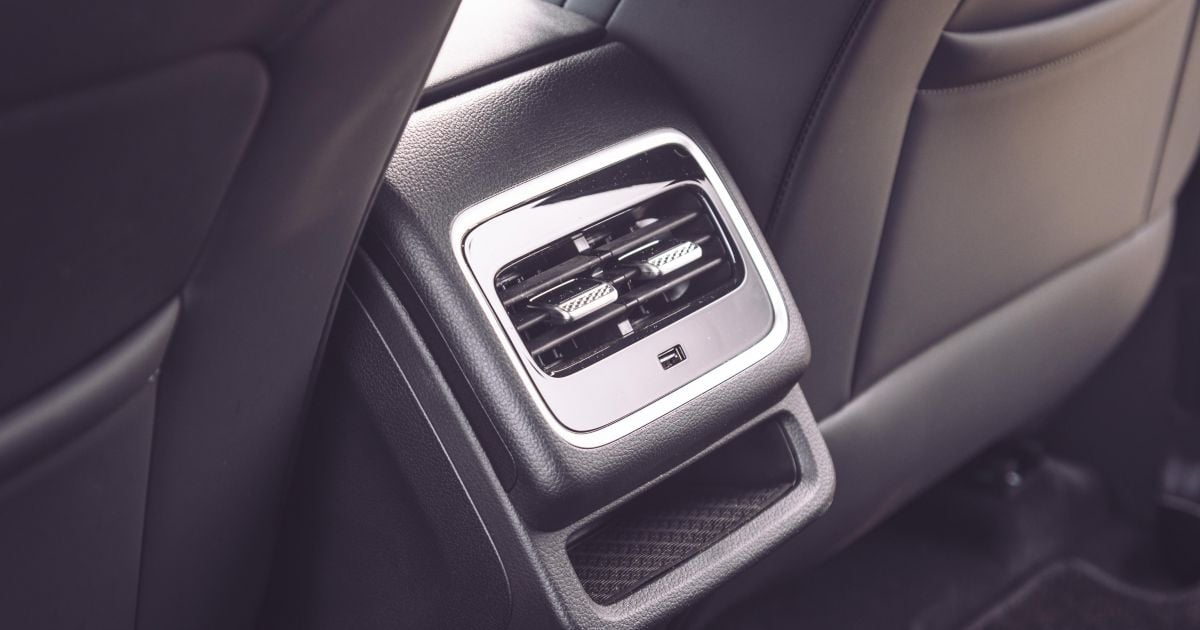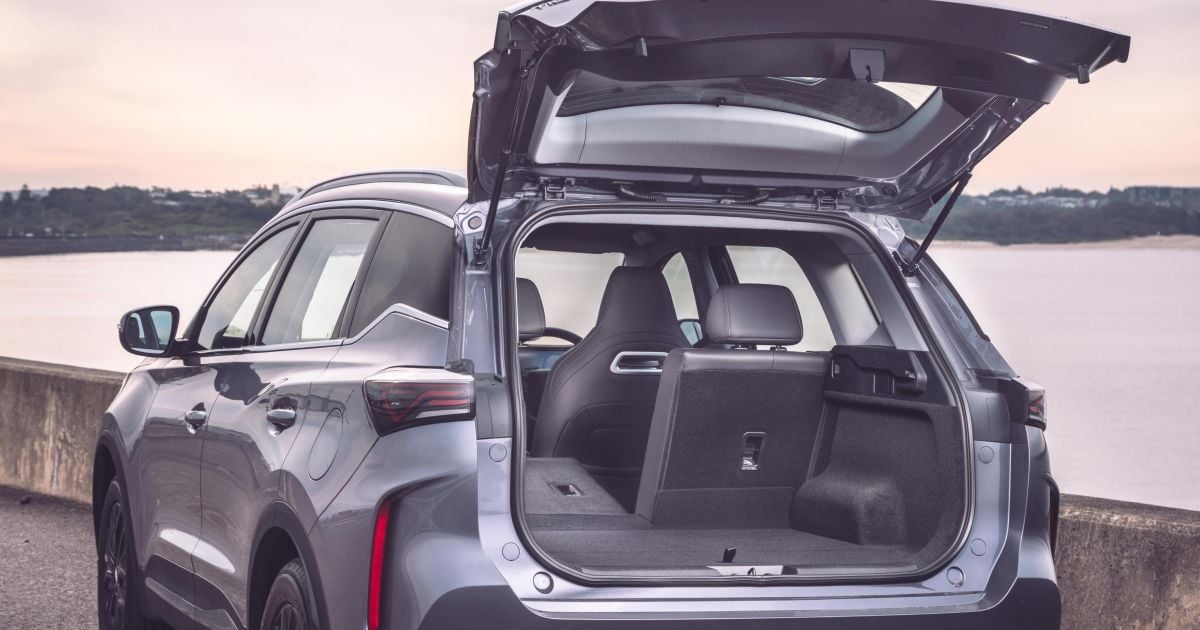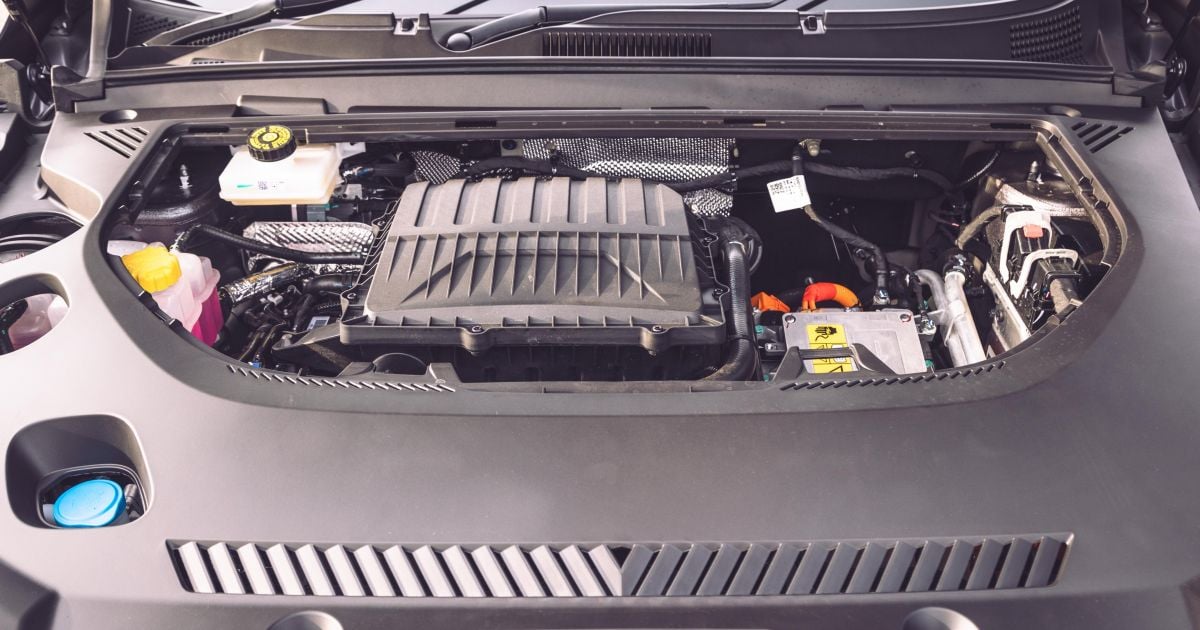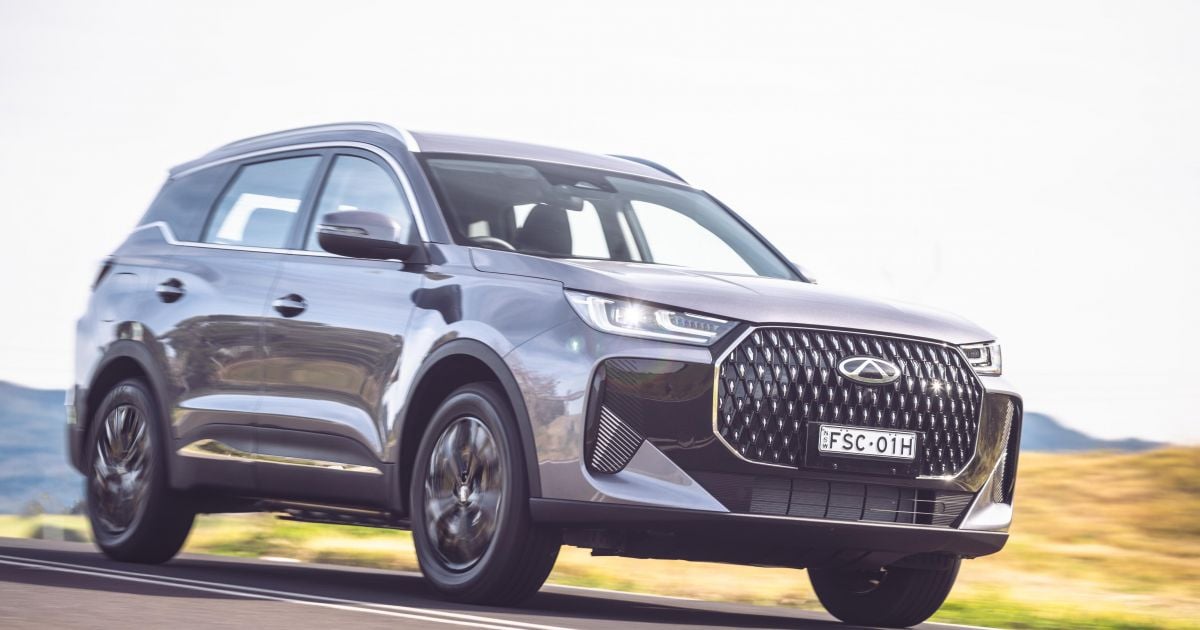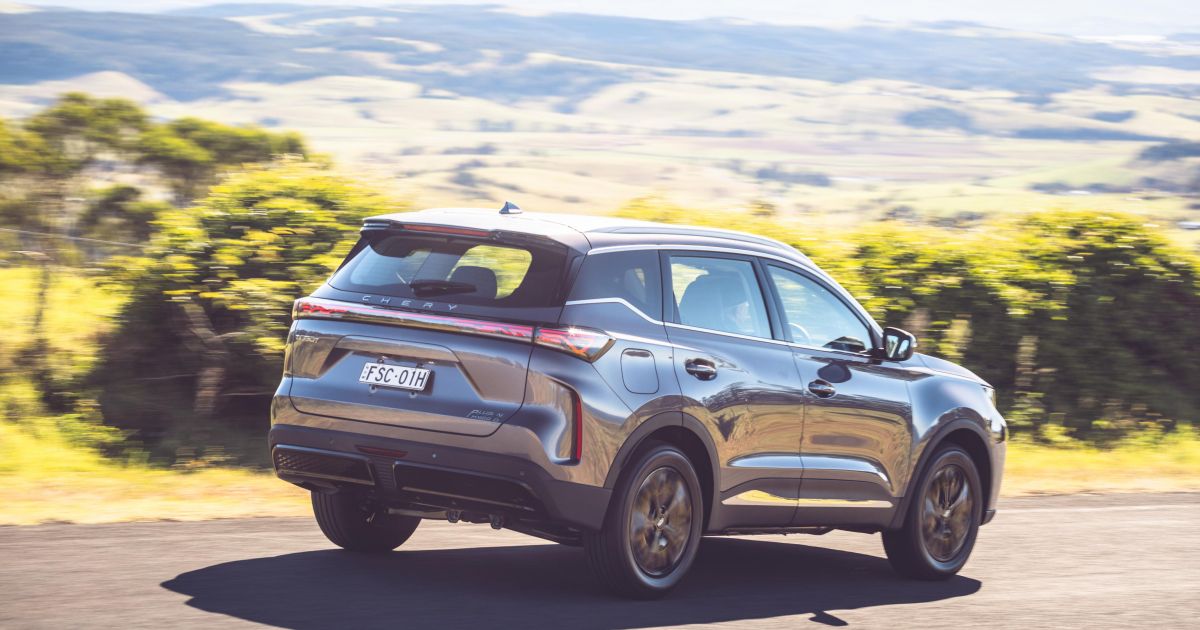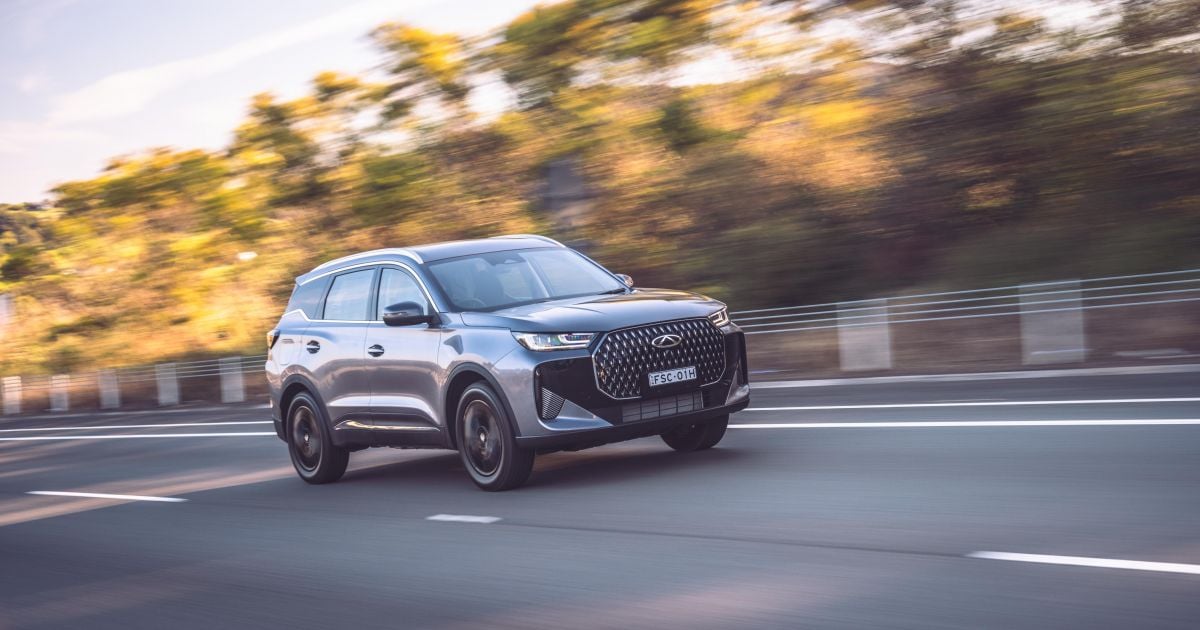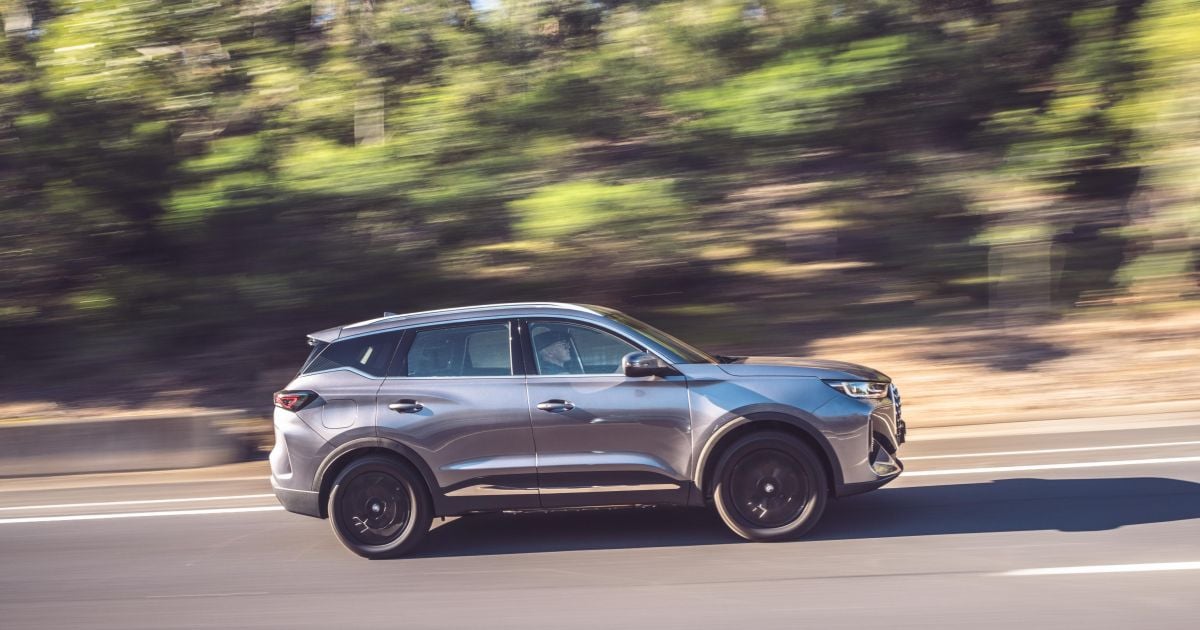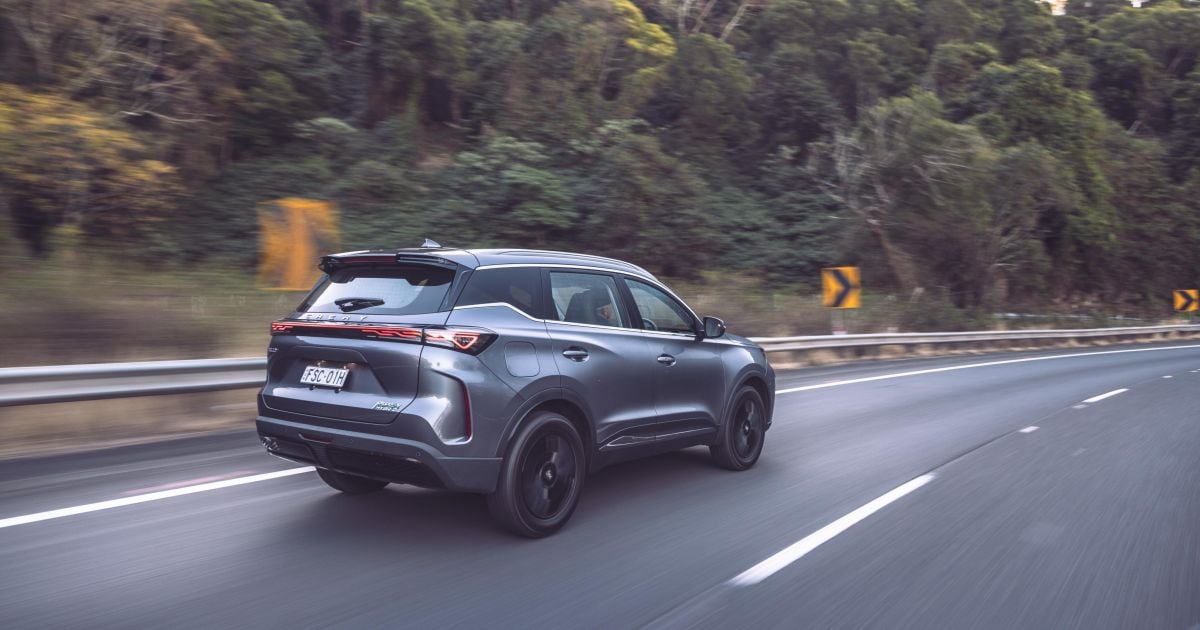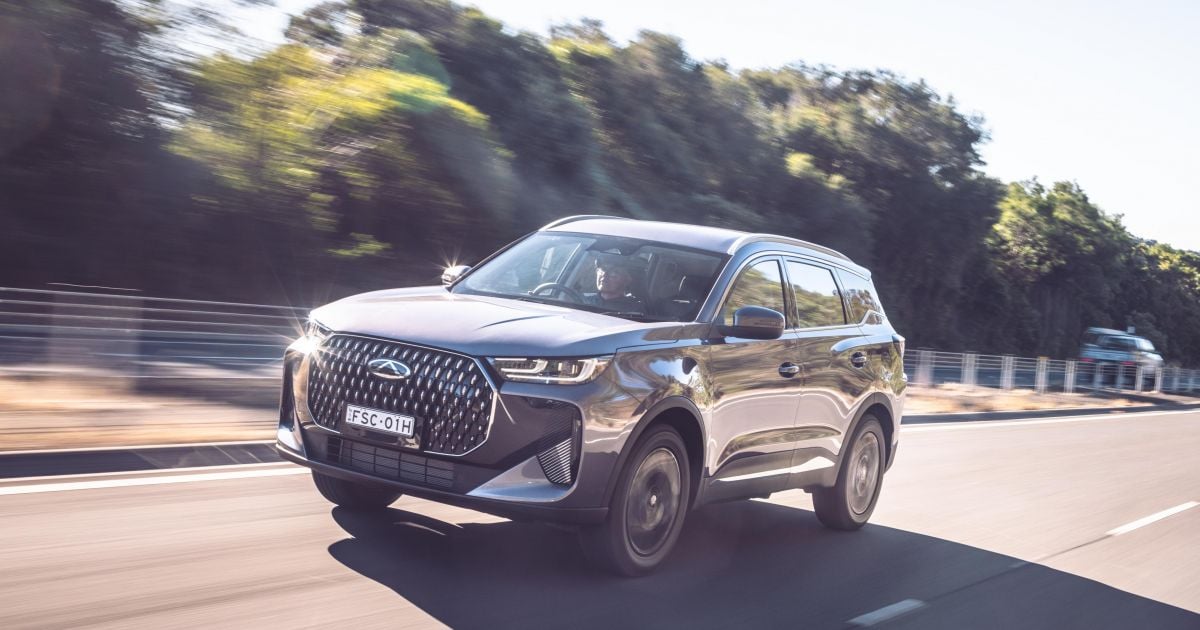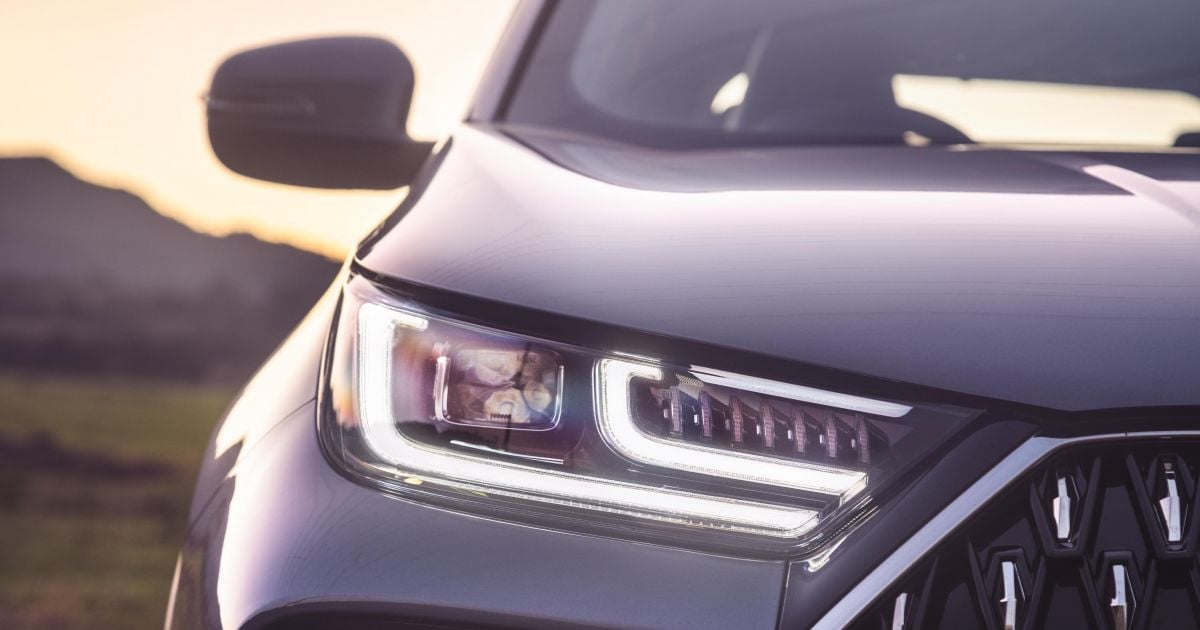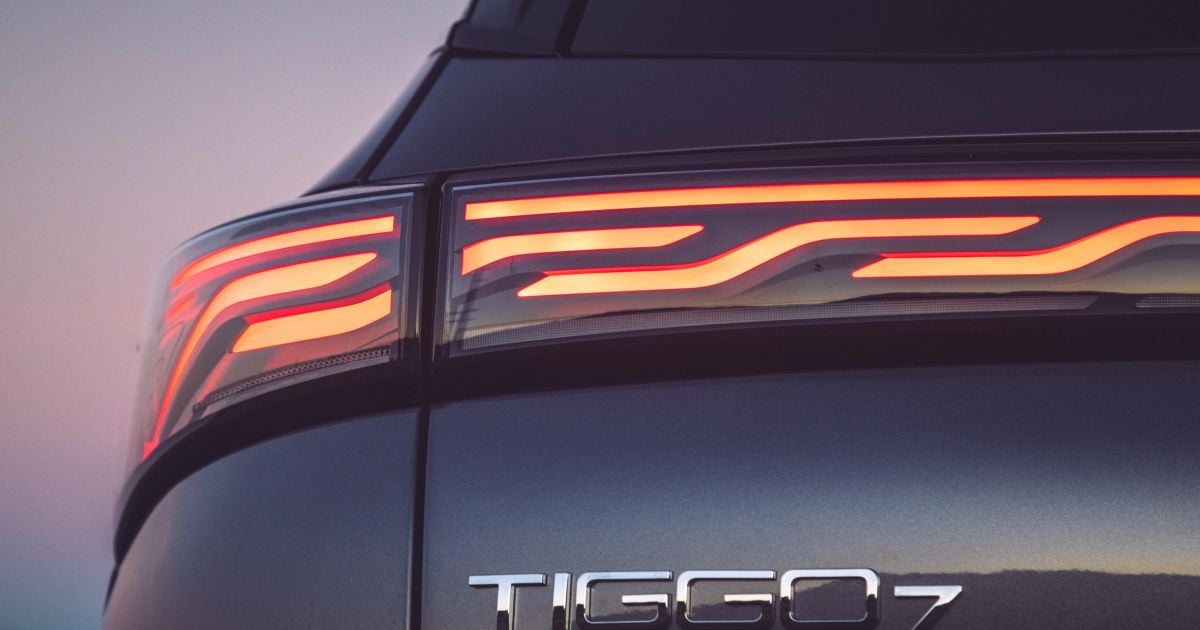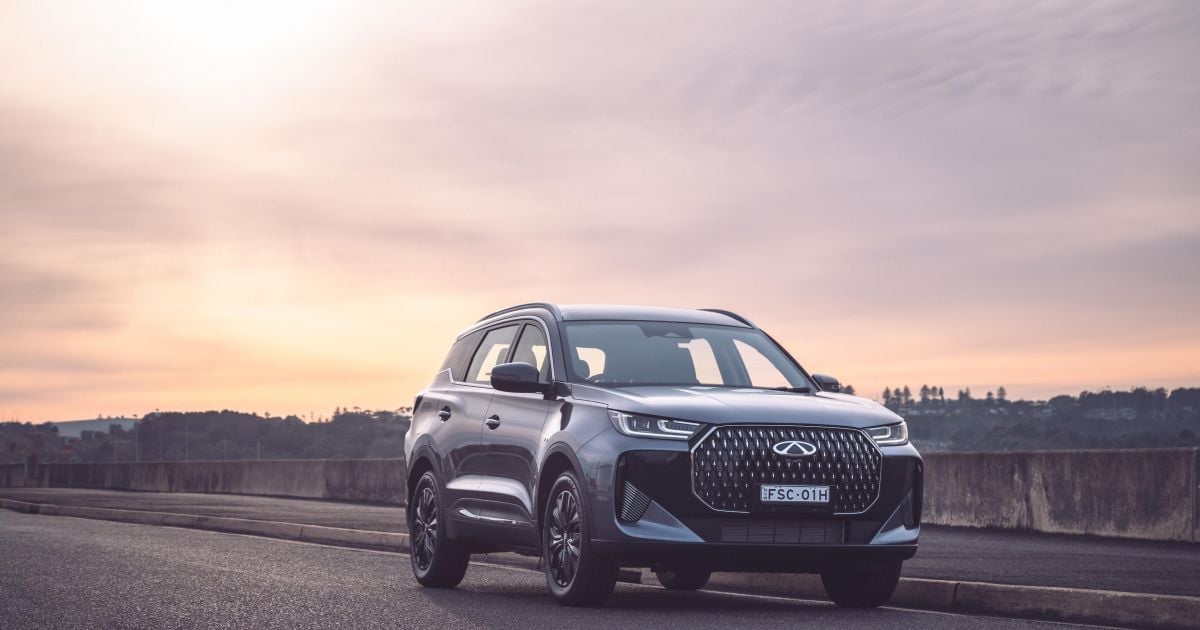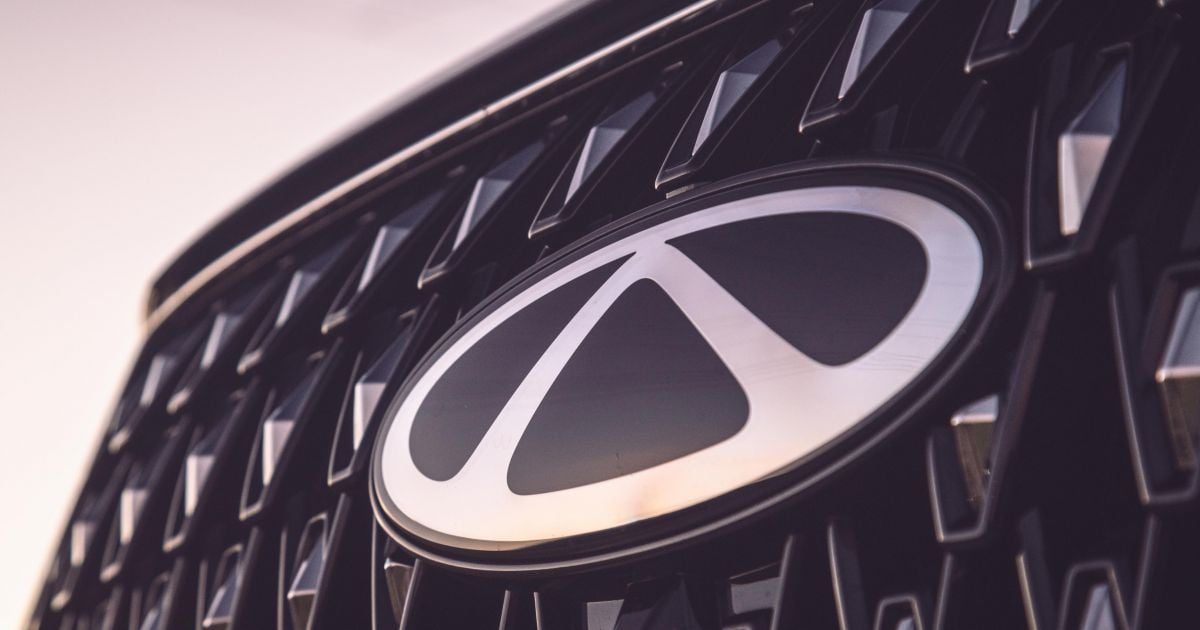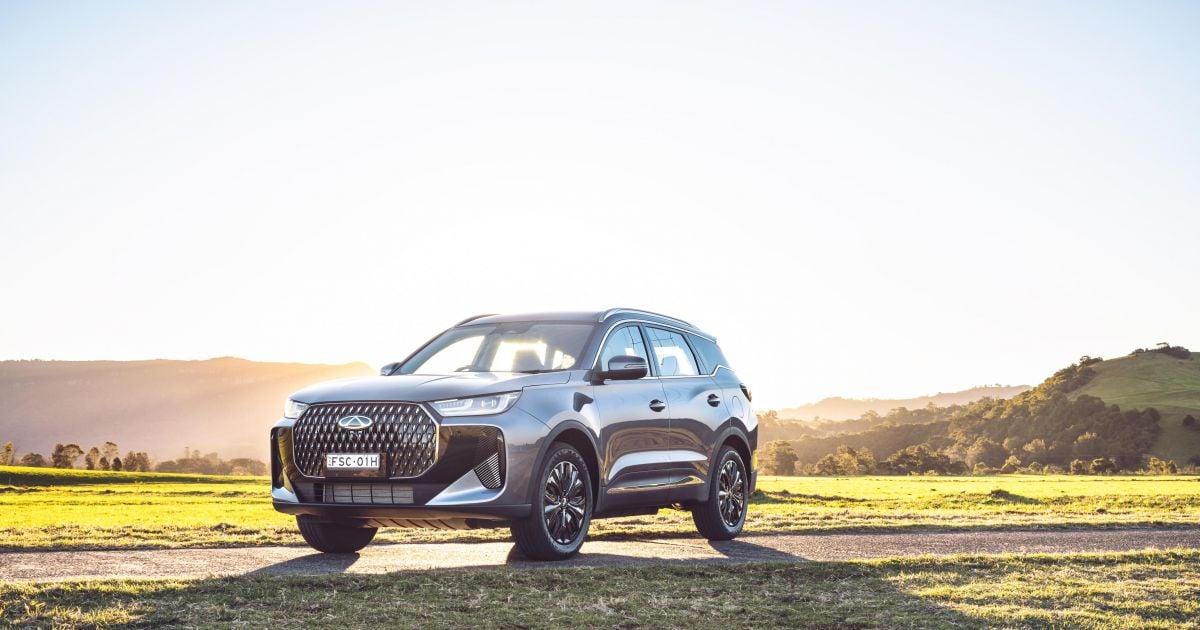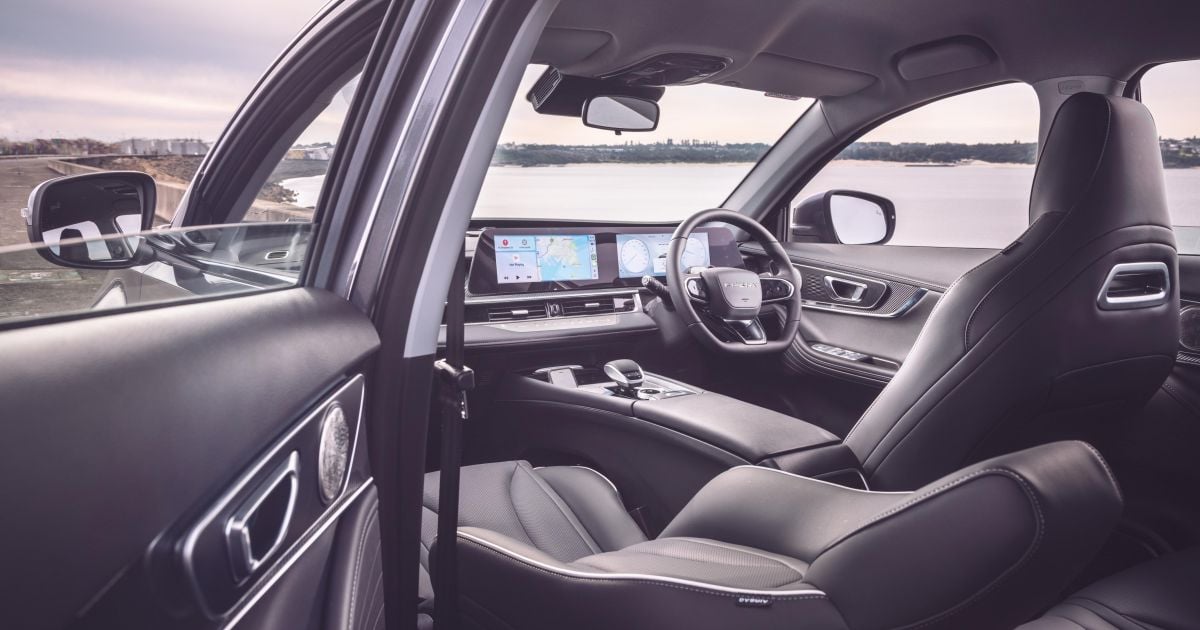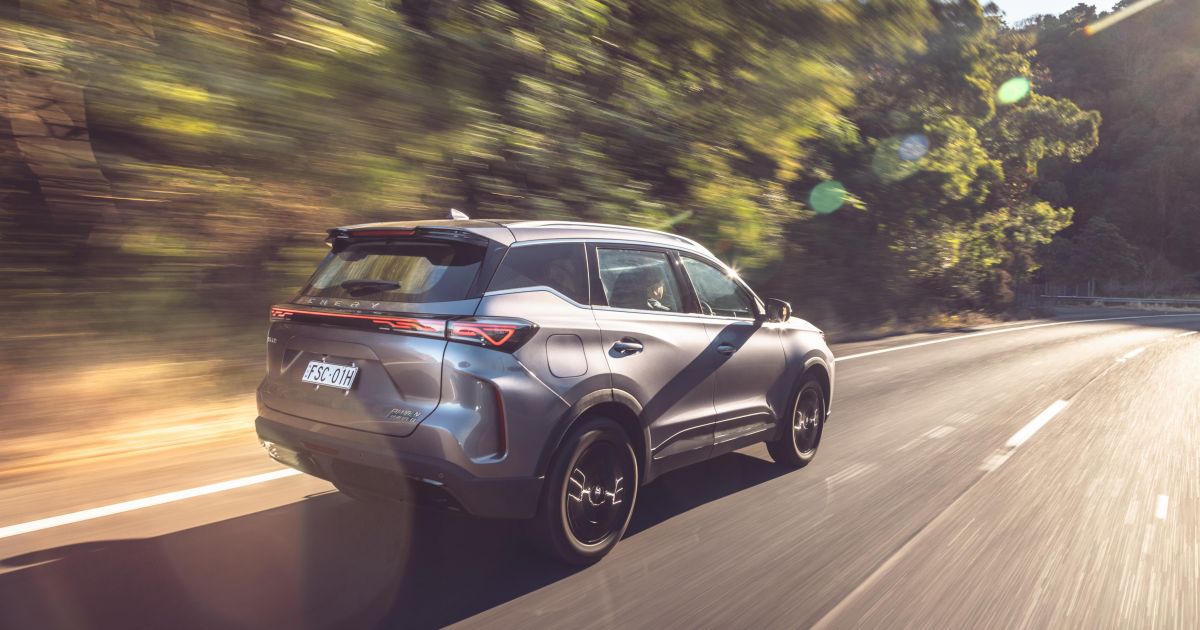The petrol-powered Chery Tiggo 7 Pro has been on sale since 2023, but now the value-packed mid-size SUV has been refreshed and given the Chinese brand’s Super Hybrid powertrain.
A bit like Clark Kent taking off his glasses to become Superman, the upgraded and newly named Tiggo 7 Super Hybrid has a slightly tweaked appearance compared to its petrol-only Tiggo 7 counterparts and packs more technology under its familiar skin than its aesthetics suggest.
The Super Hybrid system transforms the Tiggo 7 into a plug-in hybrid (PHEV) with impressive on-paper specs. It’s Chery’s first such vehicle in Australia, and it has launched locally alongside the larger Tiggo 8 Super Hybrid seven-seat SUV with which it shares its powertrain.
Under the bonnet is a smaller 1.5-litre turbocharged four-cylinder petrol engine (down from a 1.6L turbo in the Pro), but it’s been mated with a Dedicated Hybrid Transmission and a single electric motor sending power to the front wheels.
An 18.3kWh lithium iron phosphate battery bolted to the car’s underbody gives it a claimed electric driving range of around 90km – albeit on the more lenient NEDC cycle. It’s a fairly standard PHEV setup, but Chery was very particular in the way it dialled everything in.
Chery’s chief engineer David Xianqiang Lu told CarExpert at the local launch of the Tiggo 7 and Tiggo 8 Super Hybrids that the company benchmarked hybrids from Hyundai and Toyota – two brands not known for their PHEV prowess – alongside several other Chinese models.
The reasoning behind this was to create a Super Hybrid system that drives and feels like the proven plugless hybrid vehicles from the leading Japanese and Korean brands, while incorporating the practicality and efficiency benefits of recharging and long-distance electric-only driving.
It’s a bold strategy, but Chery’s rapid growth and product improvement in Australia suggest it isn’t just trying to tick a few more boxes here.
Do the new powertrain and updated cosmetics make the Tiggo 7 any more ‘super’?
How much does the Chery Tiggo 7 cost?
The Tiggo 7 Super Hybrid is priced from $39,990 drive-away for the base Urban variant, plus another $4000 for the top-spec Ultimate flagship.
| Model | Drive-away pricing |
|---|---|
| 2025 Chery Tiggo 7 Super Hybrid Urban | $39,990 |
| 2025 Chery Tiggo 7 Super Hybrid Ultimate | $43,990 |
That makes both variants exactly $10,000 more expensive than their purely petrol-powered Tiggo 7 Pro counterparts, which start at just $29,990, while being $6000 cheaper than the comparable Tiggo 8 Super Hybrids.
There aren’t many plug-in hybrid competitors in the mid-size SUV segment, and almost all of them come from China. There’s the BYD Sealion 6 from $42,990 before on-roads, the GWM Haval H6 Ultra PHEV from $47,990 drive-away, the Chery-affiliated Jaecoo J7 SHS at $47,990 drive-away, and the incoming MG HS Super Hybrid from $50,990 drive-away.
The sole Japanese competitor, at least until the next-generation Toyota RAV4 arrives next year with a PHEV option for the first time, is the Mitsubishi Outlander PHEV, which currently starts at $57,290 before on-roads but is due for an update later this year.
As for Chery’s hybrid mid-size SUV benchmarks, the RAV4 GX starts $42,260 before on-roads but packs significantly less tech, while the Hyundai Tucson hybrid starts at $45,100 before on-roads.
To see how the Chery Tiggo 7 stacks up against its rivals, use our comparison tool
What is the Chery Tiggo 7 like on the inside?
Apart from their powertrains, hardly anything has changed between the petrol-only Tiggo 7 and its Super Hybrid sibling, which isn’t a bad thing, so those already familiar with Chery’s RAV4 fighter shouldn’t expect any surprises.
For those who aren’t, the cabin looks premium and is dominated by a huge dual-screen panel up front. This comprises two 12.3-inch displays, and the whole unit looks sharp despite the thick black bezels.
This setup seems somewhat dated if you’re coming from the more Tesla-esque Tiggo 8 Super Hybrid, but it’s no less functional. Highlights of the infotainment portion include wireless smartphone mirroring and a range of useful apps, alongside its generally responsive and visually appealing presentation.
At first glance it also seems like the car’s climate system is locked inside the screen, but there’s a touch-sensitive metallic panel with all the key functions below. It’s nice to have, but still finicky while driving, as it lacks any physical reference points.
Otherwise, an always-on climate ribbon is active at the bottom of the screen, but it disappears when Apple CarPlay is in use. We like that there are still physical air vent controls, though.
On the other side of the display panel is a digital instrument cluster ahead of the driver. It’s simple and provides a small degree of customisation, but don’t expect any fancy colours or graphics – only the ability to change what information is shown on the virtual gauges.
The display appears quite empty, with icons scattered haphazardly around. This can make it somewhat confusing to find something specific at a glance, and the layout of the charge and fuel meters isn’t as intuitive as we’d like.
Although it’s unnecessary to continuously compare it to the Tiggo 8 interior (even though they are pretty similar), the Tiggo 7’s twin screens do feel like a downgrade from its larger stablemate, but there’s no less functionality here and everything is navigable using the ‘buttons’ on the steering wheel.
Instead of being real buttons, they’re touch-sensitive haptic controls finished in piano black plastic. These are magnets for fingerprints and can look second-rate after just a few minutes, highlighting how annoyingly button-averse this cabin is.
You’ll find more glossy buttons on the centre console, surrounding the chunky gear selector. Strangely, there are almost more button blanks here than actual buttons, and nearly all of them relate to driving.
This panel features a drive mode dial and dedicated HEV/EV buttons, along with a small scroll wheel for volume control. That’s all you get on that front.
Nearby is a deep storage box and a sliding cover that moves to reveal two cupholders and a wireless phone charger – only available in the Ultimate. There are also several interesting material choices to take in, such as soft-touch leather, wood-look plastic, and glossy fake carbon-fibre.
There’s also an additional storage tray underneath the centre console bridge, which – curiously – is where we found an emergency window-breaking hammer, much like what you’d find in a bus.
The car’s front seats are quite comfortable. They’re on the firmer side but offer solid bolstering, and they’re finished in what appears to be high-quality synthetic leather.
The base Tiggo 7 Super Hybrid Urban also benefits from powered driver’s seat adjustment, but front passengers don’t get the same unless they’re in the top-spec Ultimate. The same can be said for front-row seat heating and ventilation, along with a position memory function for the driver’s seat.
Soft armrests make it easy to hunker down for a longer drive, but we feel there could be more adjustment in the steering wheel. It doesn’t telescope far enough, which is something we’ve experienced in other Cherys, but sliding the seat forward will remedy this without feeling too uncomfortable.
The driver’s seat base also doesn’t tilt up far enough, making it feel relatively flat, which isn’t new in Chinese cars either.
The Tiggo 7’s second row is spacious, offering generous legroom and headroom. Its seatbacks feel more reclined than we’re accustomed to, but the folding function offers a small range of adjustment.
The base of the rear bench is also flat and firmish, but passengers riding in the middle don’t have to deal with traditional a driveline tunnel, though there is a small lump. When that seat isn’t in use, there’s a soft fold-down centre armrest with cupholders.
You’ll find rear-facing air vents on the back of the centre console, along with a single, subtle USB-A port and a shallow slot below. This panel is finished in piano black plastic, which will almost certainly get scratched to bits by kids trying to plug in cables.
Rear-seat passengers also benefit from the panoramic sunroof in Ultimate variants, although they might struggle with forward vision due to the large integrated head restraints in front of them, while both grades feature two ISOFIX anchors and three top-tether points for child seats.
Out back is a spacious boot, with no third-row seats to consume space like in the Tiggo 8. There’s also no powered tailgate, and pressing the release button causes it to open with an aggressive clang.
The load space appears narrow with no real cut-outs on either side, but there’s plenty of room to slide things in. Folding the rear seats down unlocks more space, but they won’t sit perfectly flat.
You don’t get a spare wheel in the Tiggo 7 Super Hybrid either, as the space under the floor is occupied by the car’s 12V battery and other hybrid components. There is at least a polystyrene tray with a couple of cut-outs housing the tyre repair kit and storage for small items.
Chery doesn’t state boot capacity figures for the Tiggo 7 Super Hybrid, though it does quote 356 litres with the rear seats in place (to the top of the seats) in the Tiggo 7 Pro. To the roof, it quotes 549 litres, which is comparable to the RAV4’s 580 litres.
| Dimensions | Chery Tiggo 7 Super Hybrid |
|---|---|
| Length | 4535mm |
| Width | 1864mm |
| Height | 1702mm |
| Wheelbase | 2653mm |
To see how the Chery Tiggo 7 stacks up against its rivals, use our comparison tool
What’s under the bonnet?
Chery’s Super Hybrid system comprises a 1.5-litre four-cylinder turbo-petrol engine, producing 105kW of power and 215Nm of torque. It’s paired with a Dedicated Hybrid Transmission, which incorporates a 150kW/310Nm electric motor, though combined outputs aren’t quoted.
| Specifications | Chery Tiggo 7 Super Hybrid |
|---|---|
| Engine | 1.5L 4cyl turbo-petrol |
| Engine outputs | 105kW/215Nm |
| Electric motor outputs | 150kW/310Nm |
| System outputs | – |
| Battery | 18.3kWh LFP |
| Transmission | Dedicated Hybrid Transmission (CVT) |
| Drive type | Front-wheel drive |
| Kerb weight | 1825kg |
| Fuel economy (claimed) | 1.4L/100km |
| Energy consumption (claimed) | 16.3kWh/100km |
| Electric driving range (PHEV, NEDC) | 93km |
| Fuel tank capacity | 60L |
| Fuel requirement | 91-octane regular unleaded |
| CO2 emissions | 33g/km |
| Max. DC charging speed | 40kW (20 minutes 30-80 per cent) |
| Unbraked tow capacity | 750kg |
We didn’t get enough time in any one car to record a representative real-world fuel economy figure. Even so, we did notice numbers hovering around the 6.0L/100km mark after a couple of hundred kilometres on the road.
That may sound high, but Chery said 6.0L/100km was a realistic figure for the car, considering most driving was done when the battery was at a low state of charge.
We measured energy consumption at around 1.0kWh/100km, as indicated by the car’s computer, primarily due to the battery being low on charge and the vehicle regenerating more energy than it consumed. This isn’t representative either, but still interesting.
We were also able to get within 10km of Chery’s near-100km electric-only range claim.
To see how the Chery Tiggo 7 stacks up against its rivals, use our comparison tool
How does the Chery Tiggo 7 drive?
The Tiggo 7 Super Hybrid’s on-road behaviour is a mixed bag.
The headline feature is the new powertrain, which is surprisingly good. It benefits from its simple arrangement, which provides a simple operating experience for the driver.
There are two PHEV-specific drive modes (hybrid and electric), and three standard drive modes – Eco, Normal and Sport, which are the same as those found in petrol models. Finally, there are three different levels of regenerative braking, which means you don’t need a degree in rocket science.
It’s as simple as getting in and driving, since the car is very capable of working itself out. This simplicity is what Chery was chasing, and so there are some parallels to be drawn between the Super Hybrid and its more mainstream hybrid rivals.
The transition between electric and petrol power is smooth, and the powertrain gives each method of propulsion a fair go. Its dedicated electric-only setting also does what it’s told, but there’s a clever way the brand has avoided any of the power loss issues reported with models like the smaller MG ZS Hybrid+.
The car won’t allow the battery’s state of charge to drop below roughly 25 per cent. It’s as simple as it sounds, and leaves a pure-electric range of around 20km, but that isn’t usable at such a low charge.
This means the Tiggo 7 maintains enough power to be just as spritely as it is at full charge, while not placing too much strain on the petrol engine. It’s also surprisingly good at recuperating charge and can quietly gain range without any abnormal driving.
Unfortunately, it isn’t easy to adjust the strength of regenerative braking. It’s done through the screen, of course, but it’s not that clear, and you can’t change anything unless you’re stopped – as I found after struggling on the road for around 10 minutes before giving up.
Braking response isn’t incredible either. Of course the system combines regenerative and physical braking, but the regenerative part of it requires you to apply more pedal force than sometimes anticipated, causing the actual brakes to engage unexpectedly and suddenly slow the car.
These are minor teething issues that a software update may fix, but they’re noticeable and need attention. It’s a similar story with the car’s steering, which feels strangely wobbly beyond a specific degree of steering lock in sweeping bends – almost like a worn tie-rod end in mechanical terms.
Again, the electric power steering could be recalibrated to address this issue.
Otherwise, the Super Hybrid system offers strong acceleration, even in Normal mode, albeit with some torque steer from the front-wheel drive layout. And switching between drive modes is accompanied by a voice through the speakers to inform you of the selected mode.
Acceleration is smooth, and you’re hard-pressed to hear or feel the petrol engine, even under higher loads.
That said, we did encounter one major issue in the Tiggo 7 Super Hybrid.
As I navigated a T-intersection to turn left onto an 80km/h road, I began applying throttle to get up to speed. The car began crawling forward with little power, prompting me to apply more throttle to get it moving. At about 70 per cent throttle, the car suddenly burst into life, sending a big chunk of power to the front wheels in an instant.
The result was a good second or two of wheelspin before the car jumped away and accelerated normally. I can only liken it to dumping the clutch in a front-drive manual drive car, which is not something you want in an automatic PHEV when you can’t control it.
This was the only major hiccup I experienced, and it did sap some of my confidence in the car. It was potentially (and hopefully) only a software issue, but it was concerning given it occurred in Normal mode while driving in everyday conditions.
Beyond that, the Tiggo 7 Super Hybrid offers a reassuringly well-calibrated suite of safety gear. There’s still a driver attention monitor, but it’s by no means overreactive, which is a marked improvement.
However, it’ll still ping you for spending a fraction too long looking at either screen or your mirrors, by blurting out classic Chery lines like “You Have Been Distracted!” or “You Have Been Distracted For A Very Long Time!”. Not helpful.
The lane-keep system isn’t overbearing either, while the adaptive cruise control and lane centring functions do a good job in following lanes and keeping up with traffic. The Super Hybrid tends to stick to the right-hand side of lanes though, which can be unnerving if you’re being overtaken.
Finally, a personal complaint – the ride is too firm. The car becomes quite unsettled over bumps, particularly at the rear, clattering over small imperfections.
It’s most noticeable at higher speeds on country roads, where larger bumps seem to take the car by surprise. The upside is the Tiggo 7 stays nicely planted around smooth bends, with appropriate levels of body roll.
The car goes where you point it without too many issues, but it’s sometimes hard to tell given the slightly wobbly steering feel off-centre in certain higher-speed conditions. Road noise suppression isn’t outstanding either, but this mid-size SUV is reasonably refined considering its price.
The Tiggo 7 Super Hybrid has the fundamentals to offer a really strong driving experience, but these few imperfections hold it back from greatness.
A firm ride is one thing, but what appear to be a handful of software-related issues detract from the car and we think they need attention.
To see how the Chery Tiggo 7 stacks up against its rivals, use our comparison tool
What do you get?
There are two grades of Tiggo 7 Super Hybrid available, and each boasts a healthy list of standard gear.
2025 Chery Tiggo 7 Super Hybrid Urban equipment highlights:
- 18-inch dark matte alloy wheels
- Tyre repair kit
- Automatic LED projector headlights
- LED tail-lights
- Rear fog light
- Rain-sensing wipers
- Heated side mirrors
- Synthetic leather upholstery
- Leather-wrapped steering wheel
- 6-way powered driver’s seat
- 12.3-inch digital instrument cluster
- 12.3-inch touchscreen infotainment system
- Wireless Apple CarPlay and Android Auto
- DAB+ digital radio
- Intelligent voice command
- 1 x front USB-A port
- 1 x front USB-C port
- 1 x rear USB-A port
- 6-speaker sound system
- Dual-zone climate control
Tiggo 7 Super Hybrid Ultimate adds:
- 18-inch machined alloy wheels
- Puddle lights
- Power-folding side mirrors
- Panoramic sunroof
- Auto-dimming rear-view mirror
- Driver’s seat memory function
- 4-way powered front passenger seat
- Heated and ventilated front seats
- Wireless phone charger
- 8-speaker Sony sound system
- Interior ambient lighting
To see how the Chery Tiggo 7 stacks up against its rivals, use our comparison tool
Is the Chery Tiggo 7 safe?
While the petrol Tiggo 7 Pro boasts a five-star ANCAP safety rating, it’s not yet clear whether this rating has been carried over to the Super Hybrids.
Standard safety equipment includes:
- 8 airbags, including:
- Front side
- Side curtain
- Front centre
- Driver’s knee
- Adaptive cruise control
- Autonomous emergency braking (AEB)
- Blind-spot monitor
- Driver monitoring system
- Lane-change assist
- Lane-keep assist
- Rear cross-traffic alert
- Rear parking sensors
- Reversing camera
- Safe exit assist
- Traffic jam assist
- Tyre pressure monitor
Tiggo 7 Super Hybrid Ultimate adds:
- Front parking sensors
- Surround-view camera
To see how the Chery Tiggo 7 stacks up against its rivals, use our comparison tool
How much does the Chery Tiggo 7 cost to run?
Like the broader Chery Australia range, the Tiggo 7 Super Hybrid is backed by a seven-year, unlimited-kilometre warranty. Service intervals are 12 months or 15,000km, whichever comes first.
| Servicing and Warranty | Chery Tiggo 7 Super Hybrid |
|---|---|
| Warranty | 7 years, unlimited kilometres |
| Roadside assistance | 12 months, then service-activated up to 7 years |
| Service intervals | 12 months or 15,000km |
| Capped-price servicing | 7 years |
| Average annual service cost over 7 years | $453.45 |
| Total capped-price service cost | $3174.15 |
Chery’s individual service prices are detailed below.
| Service | Price |
|---|---|
| 1yr, 15,000km | $299 |
| 2yrs, 30,000km | $349 |
| 3yrs, 45,000km | $299 |
| 4yrs, 60,000km | $349 |
| 5yrs, 75,000km | $299 |
| 6yrs, 90,000km | $1291.31 |
| 7yrs, 105,000km | $287.84 |
For context, a non-hybrid, front-wheel drive Tiggo 7 Pro will cost $2151.93 to service over seven years, while the Tiggo 8 Super Hybrid costs the same as its smaller, powertrain-sharing sibling at $3174.15.
To see how the Chery Tiggo 7 stacks up against its rivals, use our comparison tool
CarExpert’s Take on the Chery Tiggo 7 Super Hybrid
The main argument for the Tiggo 7 Super Hybrid is its exceptional value in a sea of Chinese rivals, and especially alongside pricier competitors from other Asian brands.
It’s impossible to argue with the long list of standard equipment, and we commend the fact that it’s on par with or even better than most of its Chinese competitors in that regard. The sub-$40,000 starting price is also incredible for a full-blown PHEV, and the $10,000 premium over the base petrol Tiggo 7 Pro isn’t that tough to swallow.
On its own, that Super Hybrid system is sound too. It delivers smooth and quiet motoring, and it’s easy to see the real-world fuel economy benefits stacking up.
But that impromptu ‘clutch-dump’ wiped off a lot of the shine for us, and it wasn’t isolated; we heard similar stories from other journalists on the launch drive. Chery had no explanation for it but said it would try to replicate and rectify the problem.
Powertrain aside, chassis issues related to the steering and ride aren’t deal-breakers, and we’re sure they can be easily refined by Chery in time.
We want to emphasise that this car is good, but it just needs a little more software work to liberate its full potential, because otherwise the Tiggo 7 Super Hybrid offers a compelling glimpse into what’s to come from future Chery group vehicles with similar powertrains.
It’s also worth pointing out that the Super Hybrid adds value to the Tiggo 7 nameplate. It may not be perfect from launch, but when everything works as it should it offers an impressive driving experience that speaks volumes about the work going on behind the scenes at Chery.
The improvement in safety tech is also significant compared to the petrol version of this model, but it’s impossible to give the Tiggo 7 Super Hybrid a stellar rating after experiencing the bugs that we did, even if most of the car is quite good.
For now, we encourage you to take it for a test drive if you’re interested, even if the Tiggo 7 PHEV could and should be improved in the near future. And keep an eye out for our review of the Tiggo 8 Super Hybrid, which goes live on August 1.
CarExpert can save you thousands on a new Chery Tiggo 7. Click here to get a great deal.
Click the images for the full gallery

